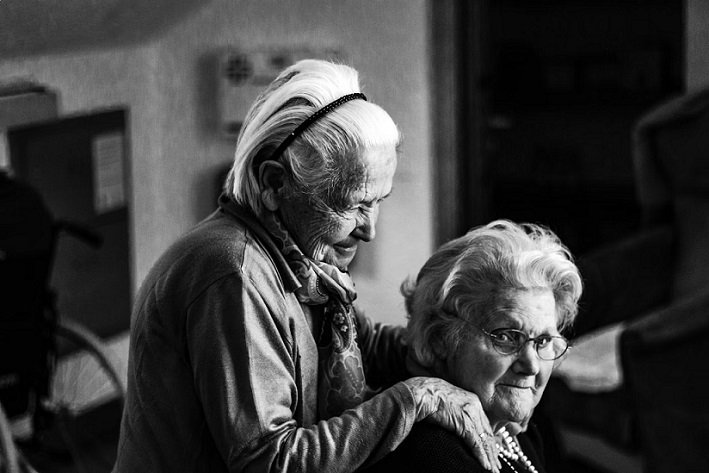The Baby Boomer generation refers to the demographics born between the Silent Generation and Generation X. Typically after the Second World War, the world experienced a massive boom in births during the mid-20th century.
This is precisely why those born between 1946 and 1964 are known as Baby Boomers. Those who belong to this generation are typically known for being family-oriented, supporters of social change, having strong work ethics, and solid mental resilience.
Baby Boomers were also the last generation that could, as a whole, declare that they suffered minimal financial strain throughout their lives. Many have a huge corpus to support their medical and other financial needs. However, they are gradually succumbing to the natural cycle of life.
As we enter 2024, the youngest Baby Boomers will become senior citizens. During their peak burden years, are Baby Boomers at increased risk of facing abuse? In this article, we will discuss nursing home senior abuse cases in detail.
The Sunset Years of the Post-War Birth Era
With 1964 as the tail end of the post-war birth era, Baby Boomers are stepping into the sunset of their lives in 2024. The good news is that many from this generation do not even consider themselves to be Baby Boomers.
Joey Dong of North Vancouver believes he is a Gen-Xer because he does not feel old at all. Despite entering his 60s this year, Dong is happily running his food blog and biking at least 50 km a day.
Similarly, Douglas Coupland, born in 1961, prefers to be associated with Generation X. To these people, even a five-year age gap with fellow Boomers made it difficult to relate. Young at heart and full of life, many Baby Boomers identify themselves as a part of the succeeding generation.
In any case, this generational group is the largest across the US. It is expected that Baby Boomers will total 61.3 million by 2029. It is also the year when even the youngest Baby Boomer would be 65 years old.
The US’ Silent Epidemic of Senior Abuse
The Baby Boomers are not only the largest population group in the US, but they are also most likely to live alone or in assisted care facilities and nursing homes. Around 26 million Americans aged 50 or more live by themselves.
This is not necessarily a bad thing unless neglect and abuse are involved. Sadly, the National Center on Elder Abuse (NCEA) states that at least 1 in 10 seniors experience nursing home abuse in some form. This may include financial exploitation or physical, sexual, and psychological abuse.
Let’s keep in mind that nursing home abuse cases are often underreported due to the shame, fear, and cognitive impairments of residents. Concerns abound that this silent epidemic will only worsen now that an entire generation is reaching its final years of life.
How Caregivers Can Put a Stop to Elder Abuse
The silver lining here is that caregivers and well-wishers of the elderly can take charge. They have the power to protect the vulnerable and aging against all forms of abuse and neglect. Let’s look at some ways this will be possible.
Being Aware of the Various Signs
It all starts with knowing the most common signs of abuse. We will go through each type of sign in detail – physical, sexual, and emotional abuse, as well as financial exploitation.
- Signs of physical abuse include unexplained bruises, sprains, broken bones, failure to take medications, broken eyeglasses, and signs of restraints.
- Common signs of emotional abuse include behaviors like sucking one’s thumb, mumbling, and general fear of seeing visitors.
- Signs of sexual abuse include bruising around the breasts or genitals, stained undergarments, and unexplained genital infections or STDs.
- In case of financial exploitation, signs like unexplained bank withdrawals, sudden changes in power of attorney, and missing cash will be present.
Taking Immediate Action
It is important for the caregiver or well-wisher of the elderly to regularly visit the nursing home. They must verify and check whether the facility is living up to its claims. These visitations are occasions to look closely for any signs of abuse or neglect.
If something negative is suspected, immediate action must be taken. There are a few ways to go about this. Let’s understand this using an example – Edwardsville in Illinois is a bustling city with over 20 nursing homes for the elderly.
However, many have a rating as low as one out of five stars. Firstly, the elderly must never be placed in one such nursing home with poor ratings. The caregiver must try to find the reason and choose a good care facility.
Even then, any suspicion must be reported to the patient representative or local Adult Protective Services. The elderly can be rescued and even compensated for their suffering. Yes, in our example, an Edwardsville personal injury lawyer would fight their case for fair compensation.
TorHoerman Law states that the caregiver must first familiarize themselves with the steps of the lawsuit before filing on behalf of their senior. Meanwhile, the elderly must be given proper medical care for complete recovery from their injuries.
Seniors who have experienced nursing home abuse often suffer from lifelong anxiety, disabilities, and fear. It’s heartbreaking that 10% of those above the age of 60 report experiencing abuse at the hands of those they trusted. This percentage does not include the cases that are not reported.
As Baby Boomers are slowly approaching their sunset years, let’s work together to make their future safe and joyful. If every caregiver and community member does their bit, no senior will have to experience such trauma and pain.
